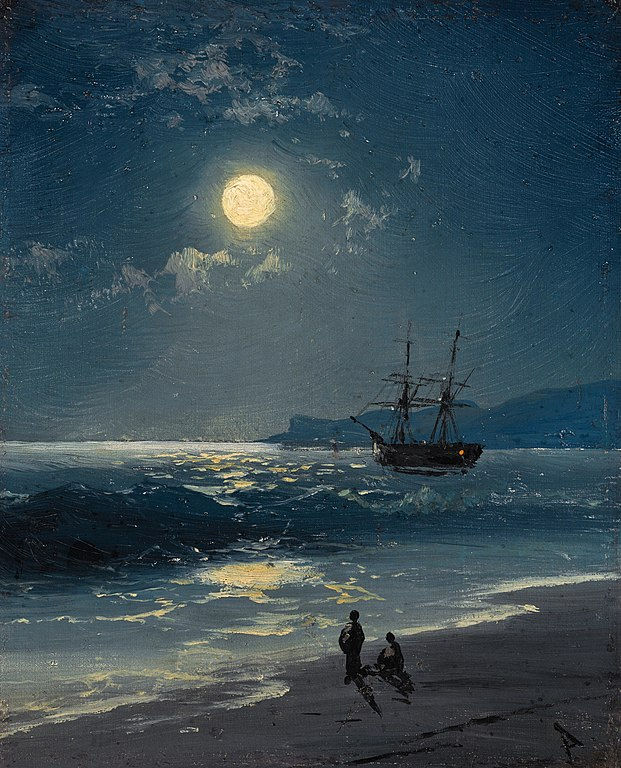The Ghostly Galleon
- Tim Stephenson

- Nov 14, 2021
- 3 min read
The wind was a torrent of darkness among the gusty trees.
The moon was a ghostly galleon tossed upon cloudy seas.
The road was a ribbon of moonlight over the purple moor,
And the highwayman came riding—
Riding—riding—
This was the first stanza from the poem The Highwayman by Alfred Noyes. It was an oft-quoted section of prose by my father. I’m not sure as to the reason why he would entertain us in this fashion, but it became an all too familiar piece each time we gazed upon the Moon.
It may well have been the only stanza my Dad knew or perhaps it’s just because the Moon itself is so often a part of our routines. So often present, so infrequently noticed, yet it was poetry that drew us to the Moon as kids. This ghostly galleon that sailed across the night sky, setting it’s course for the horizon, from whence it came and to where it goes, a child wouldn’t know. But I did look and compared it to a ship, which in my mind was akin to that of a pirate’s!

Recently, I was out for a walk with my wife at sunset. The Moon joined us, seemingly moving across each roof top and swinging from tree to tree. I’ll explain that in a bit. It was just beyond what we would call first quarter, also known as a half Moon. We stopped and considered the phase of the Moon at that moment. The Moon stopped as well, interestingly enough. I wanted to show my wife that if you point at the Moon while also pointing at the setting Sun, there was an approximate right angle that your arms would make, your body being the vertex. This, I said, was the way to understand that the Moon was a quarter of the way around the Earth, if we consider new Moon to be the starting point. New Moon is when the Moon is between the Earth and the Sun.
If a diligent observer were to do this exercise each night, they would find that the angle your arms make grows. Eventually at full Moon, you would be pointing one way towards the setting Sun and the exact opposite way towards the rising Moon. The motion of the Moon around the Earth could be tracked this way. And of course, if you were to consider the orbit around Earth to be somewhat circular you could easily see how many degrees the Moon moves each day. Just take the number of degrees in a circle, 360, and divide by the number of days in a month, 30, and the answer is 12. So the angle that your arms makes should increase by about 12 degrees per day.
When we were out for our walk, the angle was slightly more than 90 degrees. Since 90 degrees is one quarter of a circle, we can refer to this phase as first quarter. When the Moon moves through the first half of it’s orbit, we refer to these phases as waxing. Beyond the full Moon, the phases are referred to as waning.
It’s really a beautiful thing to see how the heavens reveal itself if one is to stop and take notice. Another example of this is how the Moon seemed to be following us on our walk. I’m sure you’ve noticed this too. But this is really an illusion caused by the objects that are close within your sight line appearing to move by more quickly than those far off in the distance. This is referred to as parallax and is just an apparent motion, not an actual motion.
With the Moon being 384,000 kilometres away, this is a much greater distance than the 1 or 2 kilometres of our walk, or even 50 or 100 kilometres of your drive. You may have moved from point A to point B, but think of that distance as the base of a triangle. The two sides of the triangle would be the straight line from point A to the Moon and point B to the Moon. This would be a very tall and skinny triangle, wouldn’t it!! (Try drawing this on paper.) Essentially, you really haven’t moved at all relative to the Moon, so it will just continue to hover over your shoulder, even though you are moving along. In other words, it looks like it’s following you.
So you see, basic geometry, some simple arithmetic and a willingness to notice is all it takes to figure out the Moon. But as I pointed out at the outset of this post, what we remember is imagery, poetry and beauty. But I will always contend, as the great Richard Feynman did, that although the beauty of nature is available to everyone, understanding mathematics and science will always add to that beauty.






Comments